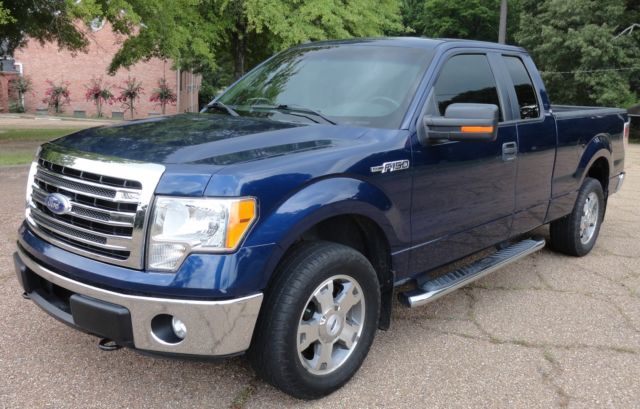LEATHER SEATS Almost Every Lariat Option POWER PEDALS Keyless Entry NERF BARS
- Condition: Used
- Make: Ford
- Model: F-150
- SubModel: XLT QUAD CAB 5.0 V8 SIRIUS BLUETOOTH ALLOY WHEELS
- Type: Pickup Truck
- Trim: XLT
- Year: 2011
- Mileage: 87,357
- VIN: 1FTFX1CF8BFA94480
- Color: Blue
- Engine size: 5.0 Coyote V8
- Number of cylinders: 8
- Power options: Air Conditioning, Cruise Control, Power Locks, Power Windows, Power Seats
- Fuel: Gasoline
- Transmission: Automatic
- Drive type: RWD
- Interior color: Black
- Safety options: Anti-Lock Brakes, Driver Airbag, Passenger Airbag, Side Airbags
- Options: CD Player, Leather Seats
- Vehicle Title: Clear
- Interested?
2011 Ford F-150 XLT QUAD CAB 5.0 V8 SIRIUS BLUETOOTH ALLOY WHEELS Description
2011 FORD F150 XLTLEATHER SEATS5.0 V8 ENGINEQUAD CABSPRAY-IN BEDLINERAM/FM STEREO CD/SIRIUS/BLUETOOTHPOWER ADJUSTABLE PEDALSFOG LIGHTSKEYLESS ENTRY W/ 2 KEYMOTESCALL 601-376-9869 FOR MORE INFO!WATCH THE VIDEO IN 720 HIGH DEF! WATCH TO THE END FOR THE TEST DRIVE!
Whether you're in the market for a new tow rig or just want the ease of use & flexibility of a pickup, look no further than this 2011 Ford F150 XLT. This is a quad cab model so you have easy access to both the front & rear seats. Speaking of which, the seats are LEATHER. This truck also has the in-cluster LCD display with truck apps and other readouts. It's basically a Lariat! Of course, power is no issue thanks to the now-legendary 5.0 V8 engine. We would take one of these compared to an over-stressed twin turbo V6 any day of the week!
We've been driving this truck the last week or so and can find nothing on it to nitpick...everything works! It has integrated AM/FM Stereo with Sirius sat radio as well as Sync bluetooth operation so you can use your phone or stream audio via Pandora or whatnot. What's really handy is the center seat setup. It has a storage box underneath or it folds down to turn into a big armrest with cupholders and another center console storage area. This truck has also been equipped with power adjustable pedals, auto headlights, fog lights, and keyless entry. There's even a spray-in bedliner protecting the bed and a full size spare underneath!
We just took this truck in on trade from a man who recently inherited it from a family member. It's a two owner truck that just drove 800 miles to to our place here in Mississippi with NO PROBLEMS so when we tell you that it's ready to hit the road, we aren't just whistling Dixie...we've put it to the test! Our mechanic has gone over everthing as well & given it a clean bill of health. It's ready to hit the road! Best of all, we got a great deal on it that we're passing along to you in the form of a LOW PRICE that is THOUSANDS BELOW the book value of nearly $20,000!!!
Values RoughTrade-In AverageTrade-In CleanTrade-In CleanRetail Base Price $12,200 $13,700 $14,925 $17,925 Mileage N/A N/A N/A N/A Total Base Price $12,200 $13,700 $14,925 $17,925 Options: Power Seat $275 $275 $275 $325 Fixed Running Boards $50 $50 $50 $75 Bed Liner $50 $50 $50 $75 Towing/Camper Pkg $275 $275 $275 $325 Leather Seats $750 $750 $750 $850 Price with Options $13,600 $15,100 $16,325 $19,575Road Test Review: 2011 Ford F-150 XLT 5.0-liter V-8 Posted by Mike Levine | February 7, 2011By Mike Levine and Mark Williams
Last year, the Ford F-150 offered most buyers a choice of legacy two-valve and three-valve 4.6-liter V-8 engines or a three-valve 5.4-liter V-8. While those engines got the job done, they weren’t known for power or performance.
This year, Ford has totally revamped the F-150’s powertrain lineup with three all-new advanced engines, plus wider availability of the 6.2-liter V-8 that was previously limited to the 2010 F-150 SVT Raptor.
We’ve extensively tested the 6.2 in the Raptor and the new entry-level 3.7-liter V-6 during our six-cylinder Work Truck Shootout. We’ve also spent several hours towing and piloting the novel twin-turbo 3.5-liter EcoBoost V-6, the F-150’s top-of-the-line towing engine. But our time with the fresh 5.0-liter V-8 was limited to a brief drive and drag race in Texas last year. That’s no longer the case.
A 2011 F-150 XLT SuperCrew 5.0 4x4 showed up in our driveway last Tuesday, and we wasted no time putting it through its paces. In less than a week, we drove it 800 miles – 622 miles of which it towed a 9,000-pound conventional tandem axle horse trailer.
Snap judgment? This could be the best all-around engine ever offered in the F-150.
The four-valve per cylinder, dual overhead cam 5.0 is positioned as the midrange engine choice for the F-150 — below the EcoBoost six-cylinder and 6.2 V-8 and above the 3.7. It’s rated at 360 horsepower (at 5,500 rpm) and 380 pounds-feet of torque (at 4,250 rpm). That’s more power than the old 5.4-liter V-8, but it doesn’t carry as high a tow rating. In the regular cab, it can pull up to 10,000 pounds instead of a maximum 11,300 pounds.
Like its engine, our test SuperCrew four-door was a middle-of-the-road model with a relatively steep MSRP of $39,445, after a $1,500 discount for the optional chrome, convenience and tow packages that runs through the end of the model year.
The metallic red F-150 came equipped with cloth captain’s chairs, AM/FM/CD stereo and Ford’s Sync hands-free multimedia system and Bluetooth connectivity. It lacked navigation, a rear backup camera and reverse sensors, making tail-first maneuvers a challenge in tight spots, and we couldn’t back up to the trailer without the help of a spotter. The optional chrome package added brightwork that included side steps and wheel covers. If it were our choice, we’d skip the package and invest in a nice set of aluminum wheels.
Despite a lack of luxury items, the XLT F-150 was more than comfortable inside. We turned our phone into a substitute for satellite radio by using Sync and Pandora to stream tunes wirelessly over Bluetooth.
Ford has updated the F-150’s instrument cluster with nice gauges and an optional 4.2-inch trip computer that Ford calls a “productivity screen” that we’ve liked since it debuted in the F-Series Super Duty. It includes apps that provide fine-grained details about towing, off-roading, fuel economy and more. Controls on the steering wheel make short work of finding the information you want quickly and with minimal distraction.
The truck’s second-row seats and flat load floor made it easy for us to stow our gear for our tow test or accommodate two kids in booster seats running errands around Los Angeles.
Our four-wheel-drive 5.0 was rated 14/19 mpg city/highway. But making up for the so-so mileage was an optional 36-gallon fuel tank that gave us peace of mind and extra range pulling the heavy trailer. For comparison, the premium EcoBoost V-6 F-150 is only available with a 26-gallon reservoir.
Unloaded, the F-150’s trip computer calculated a bladder-busting driving range of 521 miles, though we wouldn’t come close to that with the trailer behind us. In our first stretch of towing — 226 miles from Norco to Needles, Calif., which included the challenging Cajon Pass on Interstate 15 — we averaged 9.42 mpg, burning 24.03 gallons of fuel (versus an optimistic trip computer estimate of 9.8 mpg and 22.9 gallons of fuel). Those are respectable numbers for a rig that weighed 14,780 pounds on a CAT scale -- just 320 pounds less than the truck’s gross combined weight rating.
On that same stretch, we also started to realize the vast potential that’s locked inside the 5.0. As we left the L.A. basin and started climbing Cajon Pass, the truck shrugged off the weight behind it. Visibly, we could see the rear squatting lower, and we could feel the truck hunker down from inside, but power wasn’t an issue. It was available on demand.
On the steepest parts of Cajon, we had no problem keeping up with traffic at around 65 mph with the modest 3.73-to-1 rear axle. When the engine needed more power, its six-speed transmission smoothly downshifted to 3rd gear, and the mill found its sweet spot at around 4,000 rpm. The truck never lost momentum. In fact, it gained speed to the point where we had to ease back on the accelerator. After cresting the top of the grade, the truck quickly upshifted into 6th at 1,600 rpm and 65 mph.
We noticed some interesting transmission behavior as the terrain flattened out. We kept the truck in tow/haul mode the entire time it was hooked up to the trailer. Tow/haul mode does two things: The transmission holds gears longer when the truck is working hard to keep power up, and it downshifts automatically to slow the truck with a tap of the brake pedal on descents. Every cog swap was carlike, but several times after upshifting into 6th, we felt the torque converter lock up about 20 seconds after the gear change. We’re sure that helped with shift feel, but we wonder if we weren’t sacrificing a bit of fuel economy with the torque converter seeming to stay loose for such a long period. If we could squeeze out extra mileage with a faster-locking torque converter, we’d take that option over smoother shifts.
Another trait we noticed as we requested more power from the engine on climbs and to pass traffic was its split personality – similar to that of the 3.7-liter V-6. Loping along, the V-8 was subdued and quiet. But when we needed more power, the exhaust note snarled like a sports car – not surprising, since the engine is also shared with the Ford Mustang. We loved the deep notes it made. They were perfectly tuned to match the engine’s effort and sounded much better than the flat exhaust note of the EcoBoost V-6 when that engine is under load. There’s nothing like the tenor of a hard-working V-8 in a half-ton pickup.
The 2011 F-150 also features standard 12-volt electric power-assisted steering for every engine except the 6.2 V-8 – the first half-ton pickup to do so. (The limited-volume Chevy Silverado Hybrid uses a 42-volt system.) The steering feels light when the truck is stopped and during low-speed maneuvers. It dynamically adjusts steering effort to match the speed and loads the truck is under. On the highway, the steering was precise and provided excellent driver feedback. There was none of the numbness generally associated with electric steering’s early days in small cars. It seemed to vary boost levels as we entered turns, smoothly assisting the trailer around bends in contrast to the on/off boost that can occur with conventional hydraulic steering pumps.
As we drove across the desert, we encountered strong winds that had knocked several semis off the highway the day before. While we could feel the gusts buffeting the truck and trailer, we never felt control was an issue. At least once, immediately passing an 18-wheeler, we were hit by a strong gale that seemed to trigger the F-150’s trailer-sway control system.
Trailer-sway control senses difference in yaw between truck and trailer and uses the wheel brakes in both vehicles to counteract any sway before it becomes dangerous enough to throw the rig off the road.
If you order a 2011 F-150, we highly recommend you option it with the integrated trailer brake controller, which extends sway control to the trailer (in addition to controlling the trailer’s brakes via ABS). Even though our truck was optioned with the F-150’s trailer towing package, it didn’t include the brake controller, which costs an extra $230 from the factory. A local dealer had to add the controller after it arrived for our test.
Our turnaround point for our road test was near Laughlin, Nev. Cajon Pass was a warm-up for testing the 5.0 F-150 on the 12-mile, 5 percent grade Davis Dam hill climb on Arizona Highway 68, just east of Laughlin. Davis Dam has become the default location for measuring performance against the industry’s new trailer towing standards set by the Society of Automotive Engineers. It’s also where Ford recently tested the EcoBoost six-cylinder against competitors’ eight-cylinder engines. On Highway 68, the 5.0 was incredibly strong — so strong that we could accelerate at any point along the route and still gain speed to where we had to slow down to safely control the truck and trailer around turns.
We also staked out a 7,500-foot stretch of the grade where we could safely climb the hill from a full stop and measure its performance using our VBOX kit. Zero to 60 mph up the steady 5 percent grade took 30.29 seconds, and the truck finished the quarter-mile in a respectable 25.06 seconds at 55.5 mph.
Those numbers, plus seat-of-the-pants feel, make us wonder how much Ford might be sandbagging the 5.0-liter V-8’s power figures, something we suspected during our first drive in Texas.
We also ran the same performance tests on level ground. The zero-to-60 mph time with the trailer was cut almost in half, to just 16.85 seconds. Unloaded, the 5.0 yielded a zero-to-60 time of just 7.18 seconds – almost as quick as the large displacement 6.2-liter V-8 Chevrolet Silverado 1500 crew cab 4x4 that was the fastest truck in our 2008 Light-Duty Shootout.
Our final confirmation of the tremendous towing performance and potential of the 5.0 came on the Dynojet Research chassis dyno at our friends at K&N Engineering in Riverside. At the rear wheels, we measured a very healthy 311 hp and 325 pounds-feet of torque. While the torque curve isn’t as flat as the EcoBoost V-6’s curve, it is broad, and power steadily climbs over most of the rev range instead of being peaky near 4,000 rpm.
Overall, we’re very impressed with how comfortable the F-150 5.0 was during our long-haul towing legs. We towed just under the truck’s max GCWR and towing capacity, yet the truck felt like other half-tons towing much less. A truck that drives this smoothly and comfortably, with very little driver fatigue, at max capacities is something quite special — even unusual in any truck segment.
The truck was also comfortable and relatively easy to manage in unloaded driving around Los Angeles. It was also fun to show off some of the 5.0’s power at one or two green lights. We averaged between 13 mpg and 17 mpg depending on traffic conditions, surface streets and highway driving. Nothing to brag about for fuel economy, but superior to what we’ve observed driving a 6.2-liter V-8 in LA.
Which engine should F-150 buyers choose? If you’re going to tow and haul more than 10,000 pounds frequently but want something smaller than a heavy-duty pickup, opt for the 6.2. If you’re going to tow more than 10,000 pounds occasionally and need a truck for light-duty hauling activities the rest of the time, a 3.5-liter EcoBoost V-6 would probably be a good fit. But if you’re going to tow 5,000 to 10,000 pounds regularly and aren’t quite ready to trust a twin-turbo six-cylinder to move your rig, the 5.0 is for you. If we were going to buy an F-150 today, the 5.0 is the box we’d likely check on the order form.
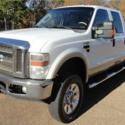 HEATED LEATHER SEATS Tailgate Step NERF BARS Tow Command POWER PEDALS Loaded Up
HEATED LEATHER SEATS Tailgate Step NERF BARS Tow Command POWER PEDALS Loaded Up
Mileage: 197,487
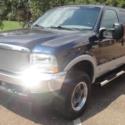 ICE COLD A/C Nerf Bars CAMPER PKG Off Road Pkg 3.73 LTD SLIP Keyless Entry CLEAN
ICE COLD A/C Nerf Bars CAMPER PKG Off Road Pkg 3.73 LTD SLIP Keyless Entry CLEAN
Mileage: 217,311
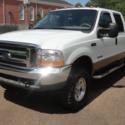 HEATED LEATHER SEATS Ice Cold Air BEDLINER Nerf Bars UPGRADED GRILLE/HEADLIGHTS
HEATED LEATHER SEATS Ice Cold Air BEDLINER Nerf Bars UPGRADED GRILLE/HEADLIGHTS
Mileage: 276,542
 4 Door+Power Seat+Premium Sound+ V6+Alloys+Nerf Bars+Tow Package- MAKE OFFER!
4 Door+Power Seat+Premium Sound+ V6+Alloys+Nerf Bars+Tow Package- MAKE OFFER!
Mileage: 112,000
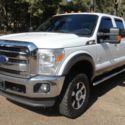 TOUCHSCREEN Heated/Cooled Seats SYNC Bedliner SIRIUS Tow Command NERF BARS Clean
TOUCHSCREEN Heated/Cooled Seats SYNC Bedliner SIRIUS Tow Command NERF BARS Clean
Mileage: 169,078
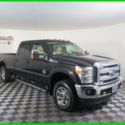 124553 Miles 2012 Ford F-350 Lariat 4WD Crew Cab Leather Seats Keyless Entry
124553 Miles 2012 Ford F-350 Lariat 4WD Crew Cab Leather Seats Keyless Entry
Mileage: 124,553
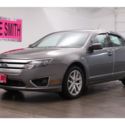 10 Ford Fusion SEL FWD Auto Leather Seats Keyless Entry Power Windows We Finance
10 Ford Fusion SEL FWD Auto Leather Seats Keyless Entry Power Windows We Finance
Mileage: 70,006
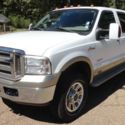 MOONROOF Heated Leather Seats 6CD CHANGER Tow Cmd SPRAYIN BEDLINER Power Pedals
MOONROOF Heated Leather Seats 6CD CHANGER Tow Cmd SPRAYIN BEDLINER Power Pedals
Mileage: 249,699
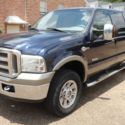 HEATED LEATHER SEATS Tow Command UPFITTER SWITCHES Power Pedals AUTO CLIMATE
HEATED LEATHER SEATS Tow Command UPFITTER SWITCHES Power Pedals AUTO CLIMATE
Mileage: 168,010
 Factory Warranty Keyless Entry Power Windows Power Seats Cruise 3rd Row
Factory Warranty Keyless Entry Power Windows Power Seats Cruise 3rd Row
Mileage: 16,024
